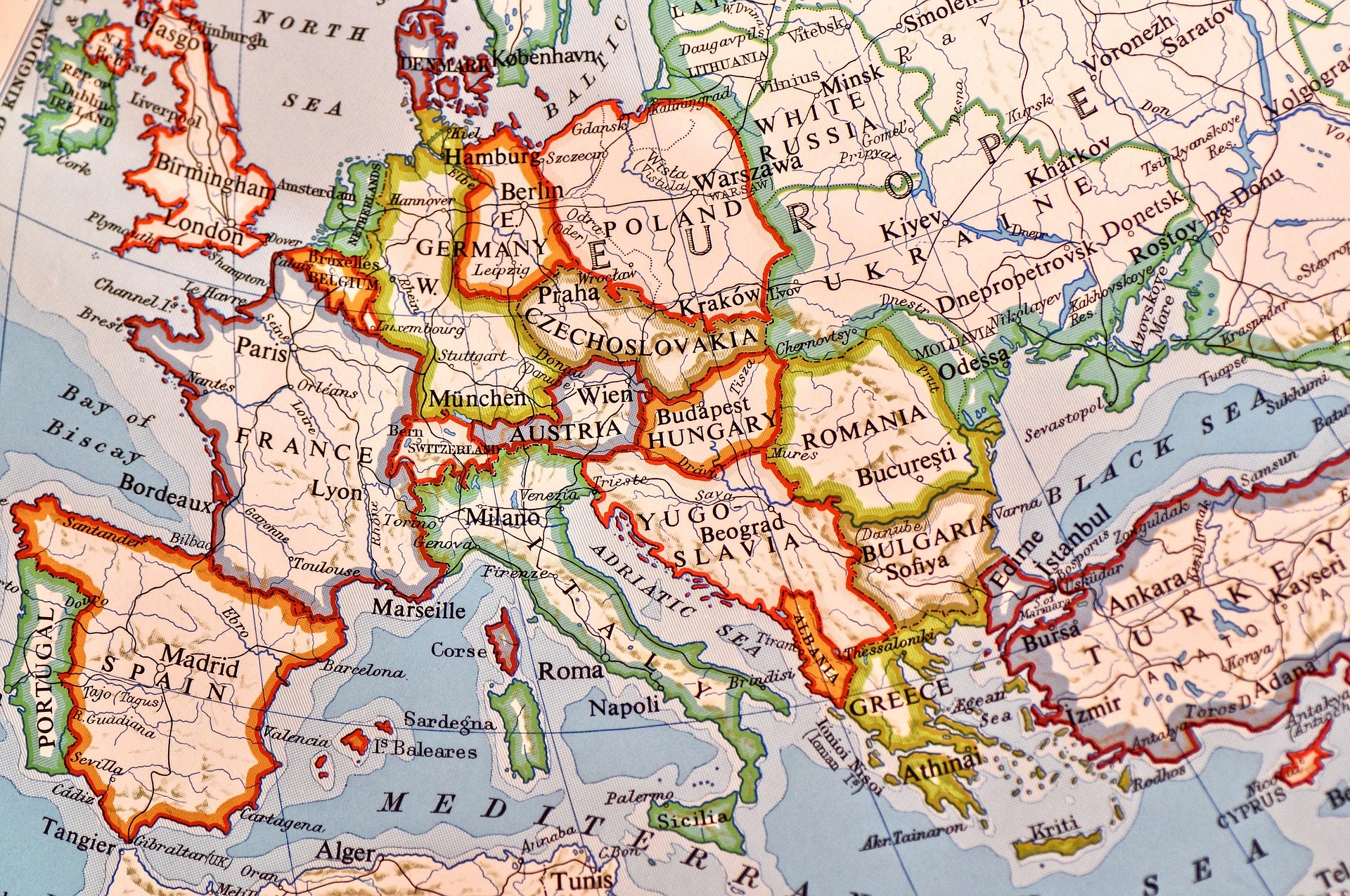In times of global political unrest, Europe, divided into many proud and strong countries, struggles for a place at the most important tables of the world. This is not because our continent is not important or relevant, it is because they don’t know whom to invite. What chances could a complete unification bring to our countries?
Author: Richard Mayer
“What are we?” might be a question a lot of us fear. But it’s also a question that would be legitimate at the European Council meetings that take place in Brussels several times a year. When the leaders of all the EU countries come together, talks are held, negotiations happen, and final agreements are made. In recent years, the many challenges Europe was experiencing, as Covid-19, the Ukraine war or uncertainty in geopolitical situations were addressed in these meetings. Ursula von der Leyen has stated her belief in “Europe that stands strong together when joint European action is needed”, but how far do we really want to go? Can European states compete with humongous nations which are home to billions and span over tens of millions of square kilometers, even when we hold together?
The idea of a Federal Europe was popularized in the “Ventotene Manifesto” published in 1941 by Altiero Spinelli, Ernesto Rossi and Eugenio Colorni, which were all imprisoned by Italian fascists on the island Ventotene during the Second World War. They believed that the only way Europe could ever achieve long-lasting peace was a federation of all European States that agreed on the values of democracy and pacifism. The Ventotene Manifesto is widely seen as the founding text for the post-WWII Federalist Movement, although it also entails socialist aspects. After 1945, Europe took considerable steps towards this vision with the founding of the European Union which has successfully established peace in its own borders.
Today, the fear of war is no longer inspired by Luxembourg’s direct neighbours, it comes from further away. Every European army alone would be swooped away by the Russian army, which the Defence Economic Outlook 2023 shows. NATO is supposed to guarantee aid in the case of an invasion, but a combined European army could also stem the attack, especially considering the coming investment initiated by the Readiness 2030 (ReArm Europe) Plan which aims at mobilising 800 billion euros for European defence bodies. This investment only makes sense if the armies invest in technologies that are compatible and interchangeable, else fighting together is a tedious process. One big investment into one big army would likely result in a more modern and efficient army, that trains and operates as one and can compare with the biggest global powers.
Migration has been one of the hottest topics all around our continent, highlighting the need for a reform of our current system. Italy recently introduced refugee camps in non-member states (e. g. Albania) where refugees should stay until their asylum procedure is done and the decision whether they can stay or must be deported has been made. Facing much criticism, this idea has been experiencing implementation problems. Germany reintroduced large-scale border controls in 2024 to combat illegal migration and soon-to-be chancellor Friedrich Merz has made it clear that he plans on making these permanent, potentially ignoring the Schengen treaty. The distribution of refugees on an EU level has also faced many challenges, with some countries declaring that they have taken ‘enough’ and refusing to allow more to enter. In this debate, many mindsets crash on an international level, unable to find an efficient compromise and most nations have started to address their problem individually. Also, the deportation of people with no valid asylum is difficult across Europe. A large amount of people to be deported duck from the national authorities to avoid their deportation, sometimes even crossing borders which is possible due to the Schengen treaty. One united European nation could develop one strategy which could then be enforced effectively throughout the federation and solve this problem. Also, asylum procedures could, if part of the strategy, be handled on the borders of our European nation while migrants are held back. This would guarantee an easy deportation if no asylum was granted or a fair distribution of refugees if they are allowed to stay. This approach would mark a huge change to our current system and is also morally questionable due to poor living conditions in border camps. Nonetheless, if EU outer borders were controlled, inner borders wouldn’t need extra border controls and free movement could be guaranteed.
Combined, the EU is the second largest economy of the world with a GDP of 20.287 trillion USD (2025, International Monetary Fund). While the USA is far ahead with 30.337 trillion USD (2025, International Monetary Fund), China is directly behind the EU with a GDP of 19.534 trillion USD (2025, International Monetary Fund). The EU is home to 161 of the 500 companies with the highest revenue in the world. Also, many chemical or pharmaceutical companies or oil-refining firms are based in the EU. These two factors are strategically important considering the global trade war emerging. In negotiations over trading deals one united European nation would have an interesting strategic position, likely to result in a better deal for us and encourage more economic growth. Additionally, internal strategies as initiatives for AI or technological development could be unified to guarantee a quicker advancement and improve the strategic capabilities of the EU.
But how would our ‘European Federation’ or our ‘United States of Europe’ look like? Taking the USA as a model, the 27 member states of the EU could all become a state of our new nation, securing some independence from the rest of Europe. Foreign affairs could be handled by a ‘European President’ or a mandate which is comparable, possibly elected by the European Parliament. This would guarantee a united and therefore effective acting. The militaries could be laid together and train together. Currently there are 24 official EU languages although many more exist and are spoken across the Union. As EU administration is translated into all these languages and working environments in EU institutions mostly function in English, not much would need to change. Responsibilities would need to be distributed between the states themselves and the federal administration, likely resulting in high independence for the states and only foreign and defence affairs to be delegated completely to Brussels. In most other areas, European cooperation could be streamlined and improved. Even monarchies could continue to represent their respective states. Realistically, not much would change except for the titles our politicians have.
All in all, one European nation would be more powerful in everything considering external partners. Today, negotiations between countries are held without a single EU-delegate. Therefore, unification would be a show of ambition to return to the greatest global forces. Our countries would need to give up on a little bit of independence and we as Europeans would have to give up on a small part of our pride. After all, we can still be proud Europeans.
Cover image by: Mabel Amber from Pixabay
Edited by: Ava-Mae Taylor



